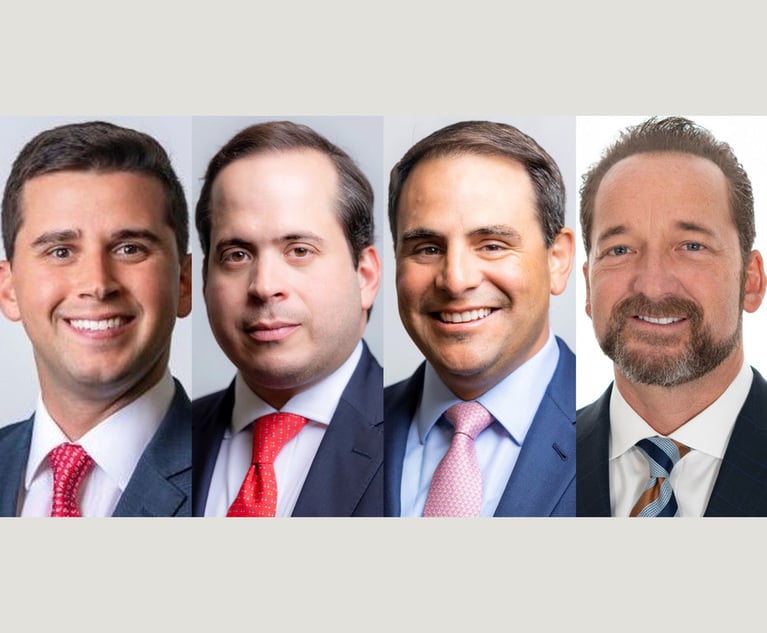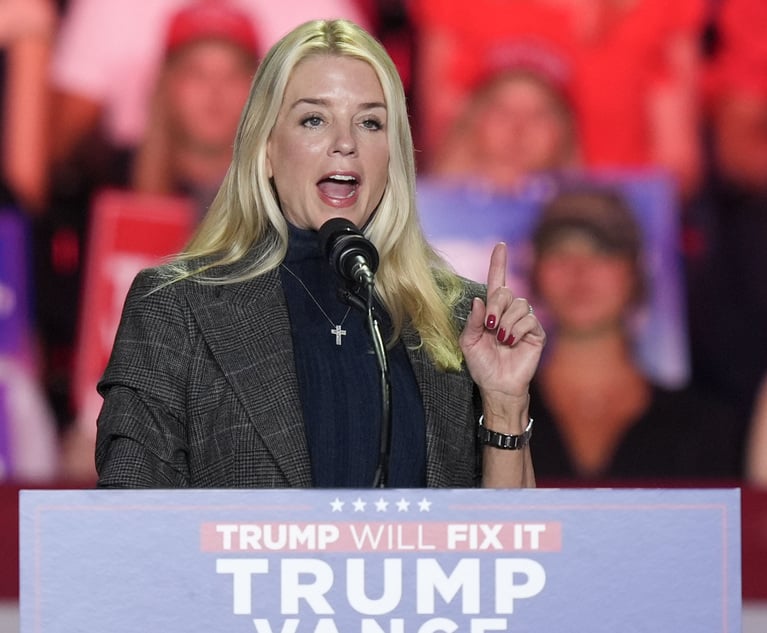 U.S. Department of Labor building in Washington, D.C. Photo: Diego M. Radzinschi/ALM
U.S. Department of Labor building in Washington, D.C. Photo: Diego M. Radzinschi/ALM Employment Costs Surge Most Ever, Stoking Inflation Concern
The stretch of healthy gains in employment costs underscores how rising wages are a key part of the inflationary picture.
April 29, 2022 at 01:40 PM
3 minute read
U.S. employment costs jumped by the most on record at the start of the year, heightening concerns about persistent inflation that set the stage for more forceful policy action by the Federal Reserve.
The employment cost index, a broad gauge of wages and benefits, advanced 1.4% in the first quarter, according to Labor Department figures released Friday. That followed a 1% advance seen in the final months of 2021.
The median projection in a Bloomberg survey of economists called for a 1.1% increase.
Compared with a year earlier, the labor costs measure jumped 4.5%, the most in data back to the early 2000s. Unlike the earnings measures in the monthly jobs report, the ECI is not distorted by employment shifts among occupations or industries.
Compensation gains last quarter were broad-based across industries, including strong advances in manufacturing and at service providers.
Wages and salaries for civilian workers climbed 4.7% from a year earlier, also the most on record. Benefits rose 4.1%. Excluding government, private wages increased 5% from a year earlier.
The stretch of healthy gains in employment costs underscores how rising wages are a key part of the inflationary picture, and if sustained, will keep pressure on the Fed to take a more aggressive approach to policy. In March, Fed Chair Jerome Powell said the current pace of pay increases is not consistent with the central bank's 2% inflation goal.
Even so, workers wages' aren't keeping pace with decades-high inflation, squeezing households and threatening to slow consumption.
Job openings are near record highs, leading businesses big and small to raise wages to attract and retain workers. And while elevated labor costs have weighed on some companies' margins, many businesses have passed along those costs to consumers through higher prices.
But wages are only part of the picture. A combination of factors are driving up input costs for businesses, including high prices for materials and ongoing supply chain challenges. S&P Global's gauge of input prices surged to a record high this month.
Looking ahead, a tight job market could keep wage growth on the boil. Labor shortages have eased somewhat, but the leisure and hospitality sector is still grappling with 1.7 million vacancies.
Companies in recent earnings calls have also noted the ongoing war for talent. John Greene, chief financial officer of Discover Financial Services, said Thursday that the company expects "some degree of salary wage pressure in 2022 and possibly into 2023 as we take steps to remain competitive."
But the economy is facing growing headwinds. Recession odds are creeping higher amid expectations the Fed will move aggressively to get a handle on red-hot inflation. And the latest figures on economic growth were weaker than expected. As a result, wage gains may moderate in the months ahead.
Reade Pickert reports for Bloomberg News.
NOT FOR REPRINT
© 2024 ALM Global, LLC, All Rights Reserved. Request academic re-use from www.copyright.com. All other uses, submit a request to [email protected]. For more information visit Asset & Logo Licensing.
You Might Like
View All
From ‘Deep Sadness’ to Little Concern, Gaetz’s Nomination Draws Sharp Reaction From Lawyers
7 minute read

Trump's Lawyers Speak Out: 'The President Had the Confidence to Retain Me'
Trending Stories
- 1Cars Reach Record Fuel Economy but Largely Fail to Meet Biden's EPA Standard, Agency Says
- 2How Cybercriminals Exploit Law Firms’ Holiday Vulnerabilities
- 3DOJ Asks 5th Circuit to Publish Opinion Upholding Gun Ban for Felon
- 4GEO Group Sued Over 2 Wrongful Deaths
- 5Revenue Up at Homegrown Texas Firms Through Q3, Though Demand Slipped Slightly
Who Got The Work
Michael G. Bongiorno, Andrew Scott Dulberg and Elizabeth E. Driscoll from Wilmer Cutler Pickering Hale and Dorr have stepped in to represent Symbotic Inc., an A.I.-enabled technology platform that focuses on increasing supply chain efficiency, and other defendants in a pending shareholder derivative lawsuit. The case, filed Oct. 2 in Massachusetts District Court by the Brown Law Firm on behalf of Stephen Austen, accuses certain officers and directors of misleading investors in regard to Symbotic's potential for margin growth by failing to disclose that the company was not equipped to timely deploy its systems or manage expenses through project delays. The case, assigned to U.S. District Judge Nathaniel M. Gorton, is 1:24-cv-12522, Austen v. Cohen et al.
Who Got The Work
Edmund Polubinski and Marie Killmond of Davis Polk & Wardwell have entered appearances for data platform software development company MongoDB and other defendants in a pending shareholder derivative lawsuit. The action, filed Oct. 7 in New York Southern District Court by the Brown Law Firm, accuses the company's directors and/or officers of falsely expressing confidence in the company’s restructuring of its sales incentive plan and downplaying the severity of decreases in its upfront commitments. The case is 1:24-cv-07594, Roy v. Ittycheria et al.
Who Got The Work
Amy O. Bruchs and Kurt F. Ellison of Michael Best & Friedrich have entered appearances for Epic Systems Corp. in a pending employment discrimination lawsuit. The suit was filed Sept. 7 in Wisconsin Western District Court by Levine Eisberner LLC and Siri & Glimstad on behalf of a project manager who claims that he was wrongfully terminated after applying for a religious exemption to the defendant's COVID-19 vaccine mandate. The case, assigned to U.S. Magistrate Judge Anita Marie Boor, is 3:24-cv-00630, Secker, Nathan v. Epic Systems Corporation.
Who Got The Work
David X. Sullivan, Thomas J. Finn and Gregory A. Hall from McCarter & English have entered appearances for Sunrun Installation Services in a pending civil rights lawsuit. The complaint was filed Sept. 4 in Connecticut District Court by attorney Robert M. Berke on behalf of former employee George Edward Steins, who was arrested and charged with employing an unregistered home improvement salesperson. The complaint alleges that had Sunrun informed the Connecticut Department of Consumer Protection that the plaintiff's employment had ended in 2017 and that he no longer held Sunrun's home improvement contractor license, he would not have been hit with charges, which were dismissed in May 2024. The case, assigned to U.S. District Judge Jeffrey A. Meyer, is 3:24-cv-01423, Steins v. Sunrun, Inc. et al.
Who Got The Work
Greenberg Traurig shareholder Joshua L. Raskin has entered an appearance for boohoo.com UK Ltd. in a pending patent infringement lawsuit. The suit, filed Sept. 3 in Texas Eastern District Court by Rozier Hardt McDonough on behalf of Alto Dynamics, asserts five patents related to an online shopping platform. The case, assigned to U.S. District Judge Rodney Gilstrap, is 2:24-cv-00719, Alto Dynamics, LLC v. boohoo.com UK Limited.
Featured Firms
Law Offices of Gary Martin Hays & Associates, P.C.
(470) 294-1674
Law Offices of Mark E. Salomone
(857) 444-6468
Smith & Hassler
(713) 739-1250







